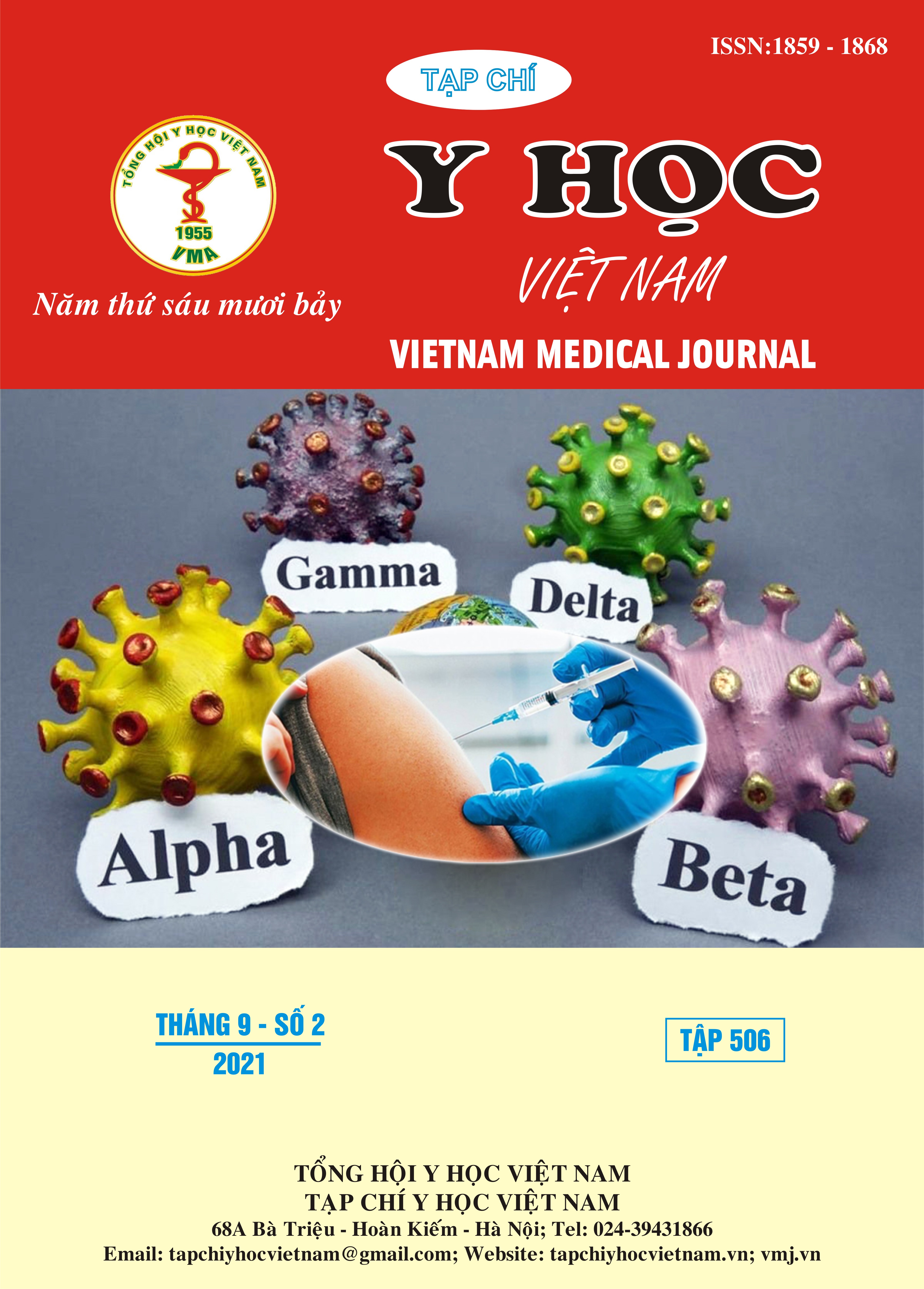QUALITY OF LIFE AND RELATED FACTORS IN HIV-INFECTED ADOLESCENTS AGED 10-15 YEARS ON ANTIRETROVIRAL TREATMENT AT THE NATIONAL CHILDREN'S HOSPITAL IN 2020
Main Article Content
Abstract
Objectives: To describe the quality of life (QoL) and its related factors in HIV-positive adolescents aged 10-15 years on antiretroviral treatment (ART) at the National Children's Hospital. Subjects and methods: A descriptive cross-sectional study of 190 HIV-infected children aged 10-15 years taking ART at the National Children's Hospital from June to December 2020. The 23-item PedsQLTM Generic Core Scales were used to measure 4 core dimensions of health: physical, emotional, social and school functions. Results: The average scores were 72.2 for total QoL; 80.3 for physical health; 75.6 for psychosocial health; 76.3 for emotional function; 82.2 for social function; and 68.3 for school function. The rates of good QoL were 56.8% in total; 67.9% for physical function; 57.4% for psychosocial health; 57.9% for emotional function; 73.2% for social function; and 45.3% for school function. Children living in poor families, who having caregivers with low education (from lower secondary school) and those who need at least 60 minutes to reach the clinic had lower QoL(p<0.05). Conclusion: HIV-infected adolescents on ART have a relatively good QoL in almost all domains, except for school function. Low household economic condition, low educational level of caregiver and longer time to access the clinic are associated with low QoL in adolescents on ART.
Article Details
Keywords
Quality of life, adolescents, HIV, ARVs, PedsQLTM
References
2. Bộ Y tế (2017). Báo cáo công tác phòng chống HIV/AIDS năm 2017 và nhiệm vụ trọng tâm năm 2018.
3. Cục phòng chống HIV/AIDS-Bộ Y tế (2013). HIV/AIDS tại Việt Nam ước tính và dự báo giai đoạn 2011-2015, Nhà xuất bản Y học, Hà Nội.
4. AL Agwu, L Fairlie (2013). Antiretroviral treatment, management challenges and outcomes in perinatally HIV-infected adolescents. J Int AIDS Soc 2013, 16(18579).
5. S Cohen, JA Ter Stege, AM Weijsenfeld, et al. (2015). Health-related quality of life in perinatally HIV-infected children in the Netherlands. AIDS Care, 27(10), 1279–1288.
6. Scharko AM (2006). DSM psychiatric disorders in the context of pediatric HIV/AIDS. AIDS Care, 18(5), 441-445.
7. Nicole Phillips, MSocSci, Amos Taryn (2016). HIV-Associated Cognitive Impairment in Perinatally Infected Children: A Meta-analysis. Pediatrics, 138(5), e20160893.
8. Kuntawee Chalermkwan, Fungladda Wijitr, Kaewkungwal Jaranit, et al. (2010). Social factors related to quality of life among HIV infected children in ubon Ratchathani Province, Thailand. Southeast Asian J Trop Med Public Health, 41(5), 1136-1144.


